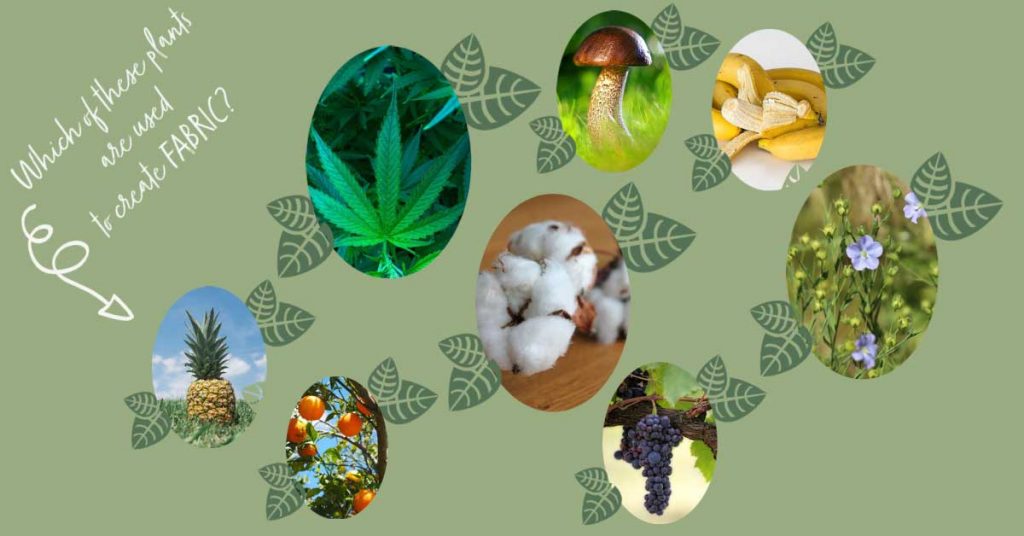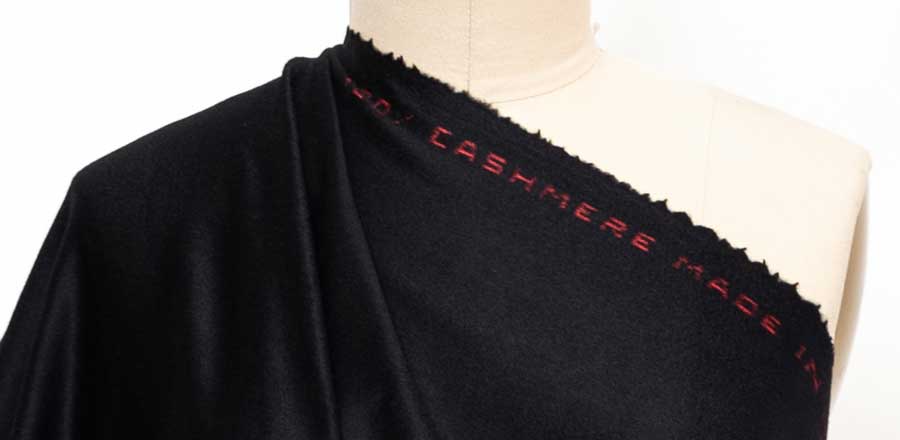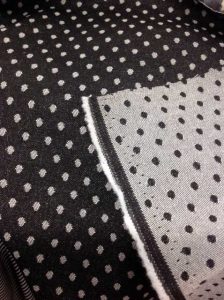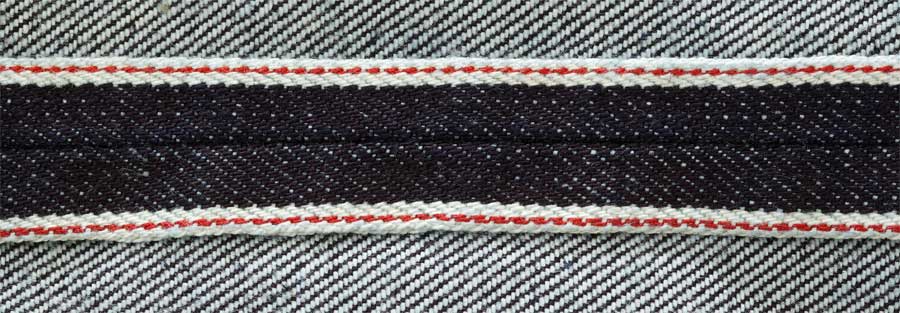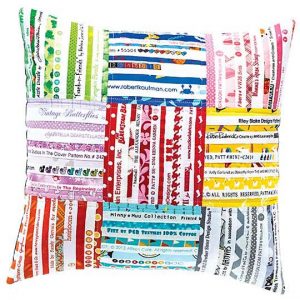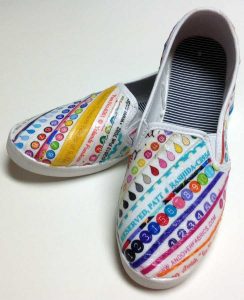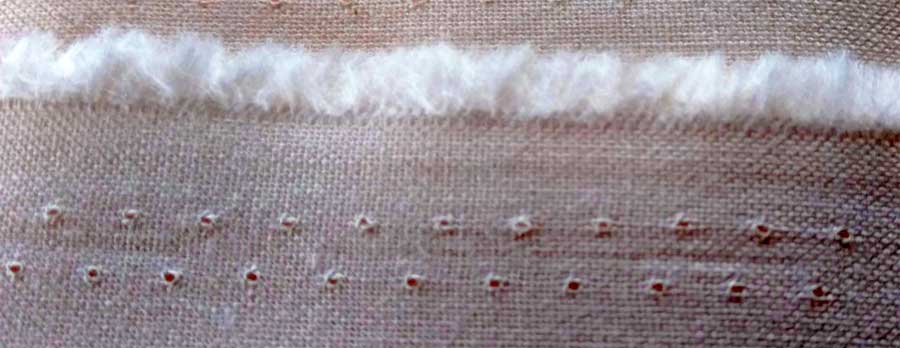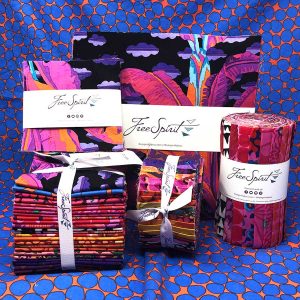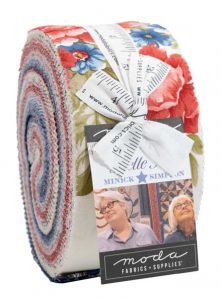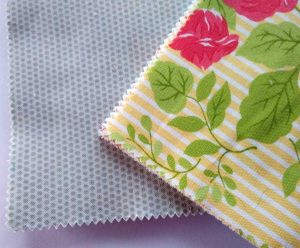This is article 1 of a multi-part series focusing on three categories of fabric – fabric made from plants, from living things, and from minerals. This month – plants!
Plants (part 1) | Plants (part 2)
Living Things: Silk | Living Things: Wool | Other Living Things
Minerals: Acrylics, Polyester, & Nylon (part 1) | Minerals: Spandex and Rayon (part 2)
Did you know that the overall global textile industry is valued at nearly one trillion dollars? The plant-sourced portion of this market grows about 7% annually and now makes up about 1/3 of the total fabric market. It also can have an ecologically positive impact on our planet.
Processing leaves, stems, stalks, seed pods, and fruit into fabric is BIG business!
While some are common and have been around for ages (think cotton and flax), other fabrics made from plants are gaining popularity. With an increased demand for fabric that is cruelty free, as well as the environmental concerns associated with creating synthetic fibers, shoppers are turning to some of the oldest and most sustainable plant fibers.
Which of these plants are used to create fabric?
If you answered ALL of them, you would be correct!
You will certainly recognize some of the plant sources such as cotton, flax (used in linen production) bamboo, and cork. But a few may surprise you. In Part 1, we are covering Cotton and Flax and have also included links to info on Bamboo and Cork.
—– The Fabrics You Expect —–
Cotton
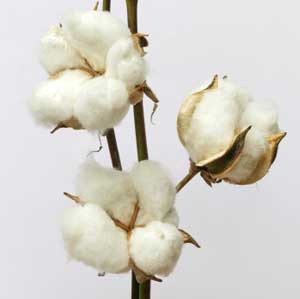 Cotton is the natural textile fiber most widely used around the world. It takes center stage in the global textile industry, capturing about 25% of the market. And it is not a newcomer! Cotton was grown in Pakistan’s Indus Valley more than 5,000 years ago and was used to make clothing in ancient Egypt. Cotton is widely used in the modern fashion industry, both in flat fabrics and in woven clothing items and household textile products and it combines well with other natural and synthetic fibers, such as rayon, polyester, spandex, etc. Let’s face it… cotton is a fabric staple that is here to stay.
Cotton is the natural textile fiber most widely used around the world. It takes center stage in the global textile industry, capturing about 25% of the market. And it is not a newcomer! Cotton was grown in Pakistan’s Indus Valley more than 5,000 years ago and was used to make clothing in ancient Egypt. Cotton is widely used in the modern fashion industry, both in flat fabrics and in woven clothing items and household textile products and it combines well with other natural and synthetic fibers, such as rayon, polyester, spandex, etc. Let’s face it… cotton is a fabric staple that is here to stay.
How is it processed?
Cotton comes from plants that produce seed pods filled with ball-shaped clumps of cotton fiber. The seeds are separated from the cotton fiber mechanically and then the threads are spun from the remaining, seedless white fiber. The resulting threads are then woven to make cloth, which can be dyed. To watch and learn more about the process, view this 6-minute video.
- Pros: Cotton fabrics are comfortable, very soft, light, durable, has good heat conduction and absorbency. This makes is a great choice for garments that are in close contact with the skin, both in spring-summer and fall-winter seasons.
- Cons: Cotton tends to shrink and is prone to wrinkles and fading.
What about sustainability and the environmental impact?
The biggest bet of sustainability is the use of certified organic cotton. Organic cotton is more eco-friendly than non-organic cotton, as it uses less water and is free of chemical pesticides, insecticides and herbicides that may otherwise pollute waterways.
Where can you buy it?
You can buy cotton and cotton blends almost anywhere. This is one fabric you will not have any trouble finding. But to give you a few places to purchase with your ASG Member discount, check out these sellers:
Flax
Linen is another popular and common fabric, though it captures a much smaller market share than cotton. It is made from the fibers of the flax plant and is considered more of a luxury fabric than cotton. Egyptians used flax to create linen cloth more than 4,000 years ago and used it in both clothing and to wrap mummies. Today, flax is often blended with other materials to add strength or reduce wrinkles.
How is it processed?
Flax has leaves that consist of long, tough fibers. The procedure to turn the plants into fabric is labor intensive, which makes linen much more expensive than cotton. To get a peek into the process, watch this 2 ½ minute video from the V&A museum.
- Pros: Linen is stronger, cooler, and lighter than cotton. It softens with each wash, making it increasingly comfortable. These qualities make linen an excellent choice for casual summer clothing and many home décor items.
- Cons: Flax fibers are inelastic which is why linen wrinkles so easily.
What about sustainability and the environmental impact?
Flax is one of the more promising developments in sustainable textiles since it can be grown with far less water and fewer pesticides than cotton and produced at a lower price.
Where can you buy it?
Like cotton, you can buy linen and linen blends many places. Buy it with your ASG Member discount from one of these sellers:
There’s still more!
In Part 2 of Fabric Sources: Plants, we’ll cover some of the unusual and unexpected plants that are used to create fabric.
~Sheryl Belson





